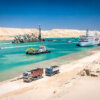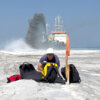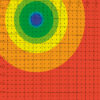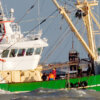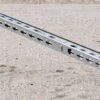Hydraulic data include measurements regarding water level, currents and waves, which can be influenced by weather-related and environmental events.
These data are relevant for dredging and reclamation projects, for planning and designing reclamation works, as well as for monitoring the works in order to assess the short- and long-term impacts.
Relevant hydraulic data include:
- Water levels (tides and surge) of the area, which will determine the design of reclamation works, as extreme water levels primarily determine the heights of the defence structures and the level of the reclamation itself;
- Currents in rivers, estuaries and coastal areas which are driven by gravity (rivers), density variations, tidal water level variations or wind shear during storms (surge currents);
- Wave data which are important for the design of the surrounding structures of a land reclamation, as well as for planning and monitoring of dredging and reclamation works;
- Water temperature;
- Water salinity.
Weather-related or meteorological data include wind, air pressure, precipitation, air temperature, salinity, visibility and storm tracks.



